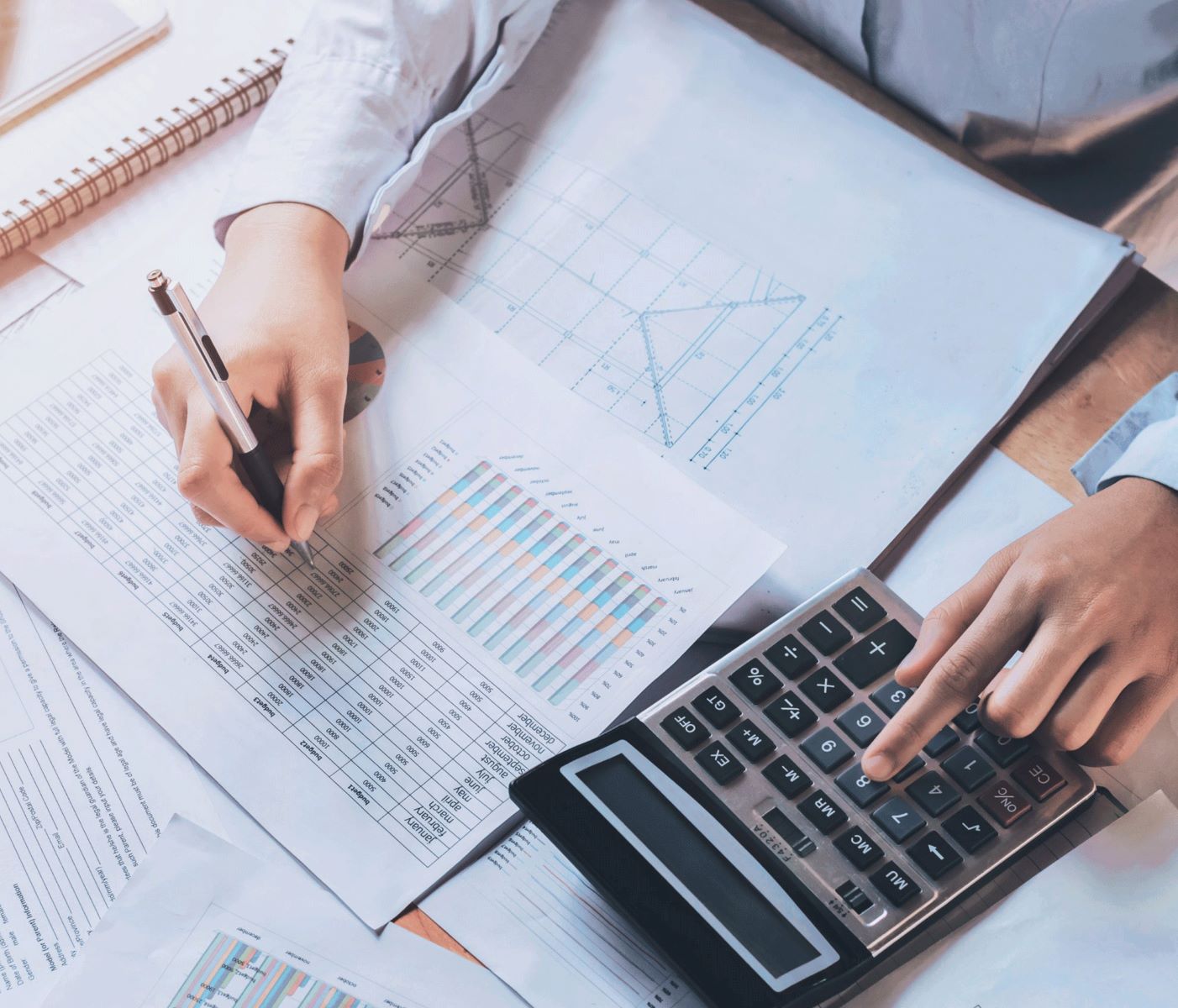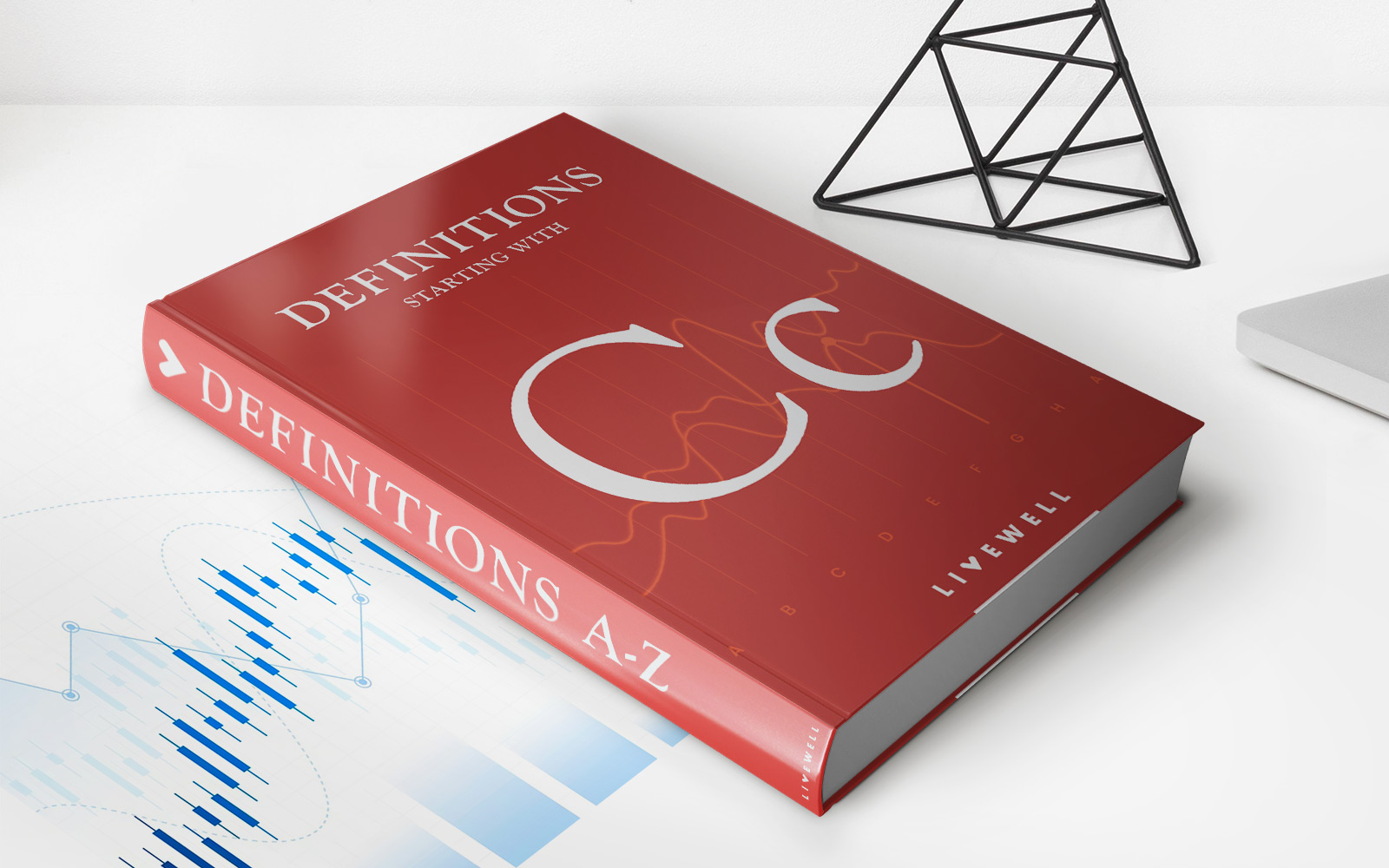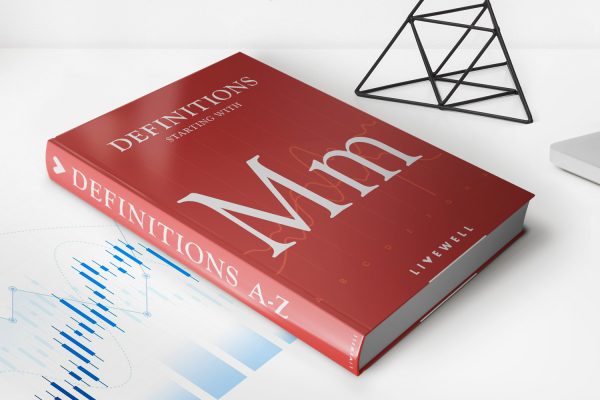

Finance
What Is Subledger In Accounting
Published: October 9, 2023
Learn about subledger in accounting and its significance in finance. Understand how subledgers help in tracking financial transactions and maintaining accurate records.
(Many of the links in this article redirect to a specific reviewed product. Your purchase of these products through affiliate links helps to generate commission for LiveWell, at no extra cost. Learn more)
Table of Contents
Introduction
In the world of finance and accounting, accuracy, organization, and efficiency are paramount. Businesses need reliable systems to track and manage their financial transactions effectively. One crucial component of this process is the subledger, which plays a significant role in maintaining detailed and accurate financial records.
A subledger, also known as a subsidiary ledger, is a supporting accounting system that provides detailed information for specific accounts or groups of accounts. It serves as a subsidiary to the general ledger, offering a more granular level of detail. While the general ledger provides a summary of all transactions, the subledger dives deeper into specific accounts, such as customer accounts or inventory management.
The purpose of using subledgers is to enhance the accuracy and efficiency of financial record-keeping. They allow businesses to keep track of specific accounts in more detail, providing a comprehensive view of transactions and their impact on specific areas of the business.
The structure of subledgers is designed to align with the organizational or operational needs of a business. They are typically organized by account type, such as accounts receivable, accounts payable, inventory, or fixed assets. Each subledger within the system focuses on specific accounts or groups of accounts, ensuring that transactions and balances are accurately recorded.
By using subledgers, businesses can reap numerous benefits. Firstly, they enable enhanced tracking and reporting capabilities. Subledgers capture detailed information about individual transactions, allowing for a more accurate understanding of financial activity within specific accounts or areas of the business. This level of detail supports analysis, decision-making, and financial planning.
Secondly, subledgers streamline the accounting process by reducing the complexity of the general ledger. Instead of cluttering the general ledger with excessive details, subledgers provide a more organized and concise way to manage specific accounts. This can result in more efficient reporting, quicker reconciliations, and a more user-friendly accounting system.
Definition of Subledger in Accounting
A subledger, in the context of accounting, is a subsidiary or supporting ledger that contains detailed information about specific accounts or groups of accounts. It serves as a supplemental system to the general ledger, which provides a summary view of all financial transactions within an organization.
The subledger is designed to record and track detailed transactions and balances for specific accounts, such as accounts receivable, accounts payable, inventory, or fixed assets. It allows businesses to maintain a more comprehensive record of their financial activity and provides a more granular level of detail than the general ledger.
Think of the general ledger as a summary of transactions, while the subledger goes into greater detail for specific accounts. For example, the general ledger may show that a company received $10,000 in revenue, but the subledger for accounts receivable will provide the breakdown of which customers paid, how much they paid, and when the payments were received. This level of detail is essential for accurate financial reporting and analysis.
Subledgers are structured in a way that aligns with the accounts or operations of a business. Each subledger focuses on a specific type of account or category of transactions. For instance, the accounts receivable subledger will contain information about customer invoices, payments received, outstanding balances, and any related adjustments.
It is important to note that the information recorded in subledgers is eventually summarized and consolidated into the general ledger. This consolidation process ensures that the financial statements accurately reflect the overall financial position and performance of the organization.
Subledgers are commonly used in businesses of all sizes and across various industries. They provide a more detailed record-keeping system, enhance financial reporting accuracy, and support effective decision-making.
Purpose of Subledgers
The purpose of subledgers in accounting is to provide a more detailed and organized system for tracking and managing specific accounts or groups of accounts. By maintaining separate subledgers, businesses can achieve several important objectives:
- Detailed Transaction Tracking: Subledgers allow businesses to track individual transactions within specific accounts. For example, an accounts receivable subledger can provide information on each customer’s purchases, payments, and outstanding balances. This level of detail enhances accuracy and transparency in financial record-keeping.
- Enhanced Financial Reporting: Subledgers support the generation of more detailed and relevant financial reports. By providing a comprehensive view of specific accounts, businesses can analyze their financial position and performance with greater precision and specificity. Subledgers enable businesses to generate reports such as aged receivables, inventory valuation, or cost of goods sold in a more efficient and accurate manner.
- Improved Accountability: Subledgers contribute to a stronger system of internal controls and accountability. With separate subledgers for different accounts, it becomes easier to trace and monitor specific transactions. This promotes accuracy, reduces the risk of errors, and helps detect and prevent fraudulent activities.
- Efficient Reconciliations: Subledgers streamline the reconciliation process by providing a more organized and concise view of specific accounts. Instead of searching through the entire general ledger, accountants can focus on reconciling transactions within a specific subledger. This saves time, reduces the potential for errors, and ensures accurate financial reporting.
- Facilitated Analysis and Decision-Making: Subledgers offer a wealth of data that can be analyzed to gain insights into various aspects of a business. Whether it’s analyzing customer behaviors, evaluating inventory turnover, or monitoring vendor relationships, the detailed information found in subledgers helps managers make data-driven decisions that drive business growth and profitability.
Ultimately, the purpose of subledgers is to provide a more comprehensive and organized system for managing and reporting financial transactions. By capturing detailed information within specific accounts, businesses can maintain accuracy, efficiency, and transparency in their accounting processes.
Structure of Subledgers
The structure of subledgers is designed to align with the specific accounts or operational needs of a business. It provides a methodical organization of financial information and ensures that transactions and balances are accurately recorded. Here are the key elements that contribute to the structure of subledgers:
- Account Type: Subledgers are typically organized based on account types or categories. For example, businesses may have separate subledgers for accounts receivable, accounts payable, inventory, fixed assets, or cash. This structure allows for a more focused view of specific types of accounts and facilitates accurate tracking and reporting.
- Account Details: Within each subledger, detailed information about individual accounts is recorded. This includes account numbers, names, transaction dates, transaction descriptions, and transaction amounts. By capturing this level of information, businesses can maintain a comprehensive record of financial activity within each account.
- Transaction Details: Subledgers capture the specific details of each transaction associated with a particular account. This includes invoice numbers, customer names, payment dates, purchase orders, and other relevant transaction information. These details provide a complete audit trail for each account and facilitate accurate reporting and analysis.
- Balance Tracking: Subledgers maintain ongoing balance information for each account. This includes opening and closing balances, as well as any adjustments or corrections made during the accounting period. By tracking these balances, businesses can accurately report the financial position of specific accounts and monitor changes over time.
- Integration with General Ledger: Subledgers are linked to the general ledger, which serves as the main financial record-keeping system. The information recorded in subledgers is summarized and periodically transferred to the general ledger. This integration ensures that the financial statements reflect the complete picture of the organization’s financial activity.
The structure of subledgers can vary from business to business, depending on the complexity of their operations and the specific needs of their accounting system. Some businesses may have multiple subledgers for different account types, while others may have a single, consolidated subledger. Regardless of the structure, subledgers play a crucial role in maintaining accurate and detailed financial records within specific accounts.
Benefits of Using Subledgers
The use of subledgers in accounting offers several significant benefits for businesses. These benefits contribute to improved accuracy, efficiency, and decision-making in financial record-keeping. Here are some key advantages of using subledgers:
- Enhanced Tracking and Reporting: Subledgers provide a more detailed view of specific accounts or groups of accounts. By capturing individual transactions and maintaining up-to-date balances, businesses can track and report financial activity with greater accuracy and transparency. This level of detail enhances decision-making and supports effective financial planning.
- Streamlined Accounting Process: By using subledgers, businesses can organize and manage specific accounts more efficiently. Instead of cluttering the general ledger with excessive details, subledgers offer a more concise and focused way of recording and tracking transactions. This streamlines the accounting process, reduces complexity, and improves the overall usability of the accounting system.
- Accurate Reconciliations: Subledgers simplify the reconciliation process by providing a more organized and detailed view of specific accounts. Accountants can easily match transactions within a particular subledger, reducing the time and effort required to reconcile accounts. This enhances accuracy and reduces the risk of errors in financial reporting.
- Effective Financial Analysis: Subledgers provide valuable data that can be used for in-depth financial analysis. By examining the transactions and balances within specific accounts, businesses can gain insights into customer behaviors, inventory management, cash flow patterns, and other crucial aspects of their operations. This analysis helps identify trends, evaluate performance, and make informed business decisions.
- Improved Internal Controls: Subledgers contribute to a stronger system of internal controls. By maintaining separate subledgers, businesses can ensure that transactions are properly recorded, monitored, and audited. This reduces the risk of errors, fraud, and misappropriation of assets. Well-maintained subledgers facilitate compliance with regulatory requirements and provide a reliable audit trail.
Overall, the benefits of using subledgers in accounting are substantial. They enable businesses to maintain accurate and detailed financial records, streamline processes, support decision-making, and promote transparency and accountability. By leveraging the advantages of subledgers, businesses can enhance their financial management practices and drive success in their operations.
Types of Subledgers
Subledgers are used to track and manage specific accounts or groups of accounts within a company’s accounting system. The types of subledgers implemented can vary depending on the industry, size of the business, and the specific accounting needs. Here are several common types of subledgers:
- Accounts Receivable Subledger: This subledger tracks customer invoices, payments received, and outstanding balances. It provides detailed information about each customer’s transactions, facilitating accurate tracking of account balances and supporting effective credit management.
- Accounts Payable Subledger: The accounts payable subledger keeps track of vendor invoices, payments made, and outstanding balances owed to suppliers. It provides businesses with a comprehensive view of their liabilities and helps manage cash flow by ensuring timely payment to vendors.
- Inventory Subledger: This subledger monitors the quantity, cost, and value of goods held in inventory. It tracks purchase orders, receipts, sales, returns, and adjustments related to inventory items. The inventory subledger assists in managing stock levels, assessing valuation methods, and monitoring inventory turnover.
- Fixed Assets Subledger: The fixed assets subledger records the acquisition, depreciation, and disposal of long-term assets, such as buildings, equipment, and vehicles. It helps businesses accurately track the value and condition of their fixed assets, calculate depreciation expenses, and ensure compliance with accounting standards.
- Cash Subledger: This subledger records all cash transactions, including cash receipts and payments. It provides an overview of the cash position and helps reconcile bank statements, track cash inflows and outflows, and manage internal cash controls.
- Project Subledger: Project subledgers are utilized in industries where projects are a significant part of the business, such as construction or consulting. These subledgers track the income, expenses, and progress of individual projects to ensure accurate project accounting and budget management.
- Expense Subledger: An expense subledger records various expenses incurred by a business, such as utilities, salaries, marketing costs, and travel expenses. It helps monitor spending, track cost allocations, and provides insight into the financial impact of different expense categories.
These are just a few examples of the types of subledgers that businesses commonly use. Depending on the nature of the business, there may be additional specific subledgers tailored to its unique accounting needs. The utilization of subledgers allows for a more organized and detailed record-keeping system, facilitating accurate financial reporting and analysis.
Examples of Subledgers
Subledgers play an essential role in organizing and tracking specific accounts within an accounting system. Here are some common examples of subledgers that businesses use:
- Accounts Receivable Subledger: This subledger is used to track customer transactions, including invoicing, cash receipts, and outstanding balances. It helps businesses maintain accurate records of customer accounts, monitor payment status, and manage credit terms effectively.
- Accounts Payable Subledger: The accounts payable subledger is used to record vendor invoices, payment transactions, and outstanding balances owed to suppliers. It allows businesses to keep track of their liabilities, manage vendor relationships, and ensure timely payments.
- Inventory Subledger: The inventory subledger maintains detailed records of inventory items, including purchases, sales, returns, and adjustments. It provides businesses with insights into stock levels, cost of goods sold, and inventory valuation methods.
- Fixed Assets Subledger: This subledger tracks the acquisition, depreciation, and disposal of fixed assets, such as buildings, machinery, and vehicles. It helps businesses maintain accurate records of asset values, calculate depreciation expenses, and manage the lifecycle of their fixed assets.
- Cash Subledger: The cash subledger records cash transactions, including receipts and payments. It enables businesses to track cash inflows and outflows, reconcile bank accounts, and manage their cash position effectively.
- General Ledger Subledger: Some businesses may use a subledger to track specific accounts or groups of accounts within the general ledger. This allows for more detailed reporting and analysis of particular financial activities, such as revenue by product line or expenses by department.
- Payroll Subledger: A payroll subledger is used to manage employee compensation and related expenses. It tracks salary payments, tax withholdings, benefits, and other payroll-related transactions. This subledger helps businesses accurately track payroll expenses and comply with payroll tax regulations.
These examples highlight the diversity of subledgers, which provide businesses with the ability to track and manage specific accounts in a more detailed and organized manner. By utilizing subledgers, businesses enhance their financial record-keeping, improve reporting accuracy, and gain valuable insights into various aspects of their operations.
Integration with General Ledger
Subledgers are an integral part of the overall accounting system and are closely integrated with the general ledger. The general ledger serves as the primary financial record-keeping system that summarizes all financial transactions across the organization. The integration between subledgers and the general ledger ensures a comprehensive and accurate representation of the company’s financial position.
Here’s how subledgers and the general ledger interact:
- Data Transfer: Transactions recorded within subledgers are periodically summarized and transferred to the general ledger. This transfer process involves consolidating the detailed information from subledgers into summarized entries that represent the overall impact on the accounts in the general ledger.
- Account Balances: The balances in the subledgers are reconciled with the corresponding accounts in the general ledger. This reconciliation ensures that the subledger balances and general ledger balances agree, providing consistency and accuracy in the financial records.
- Financial Reporting: The general ledger is used to generate financial statements, such as the balance sheet, income statement, and cash flow statement. The data from the subledgers is consolidated within the general ledger to provide a complete and accurate picture of the company’s financial performance and position.
- Adjustments: Adjustments made in the general ledger, such as accruals or period-end closing entries, are reflected in the subledgers accordingly. This ensures that the detailed information within the subledgers aligns with the adjustments made at the general ledger level.
- Reporting Flexibility: The integration between subledgers and the general ledger allows for flexibility in reporting. Businesses can generate reports that focus on specific accounts or groups of accounts within the general ledger or subledgers, providing detailed insights into various financial aspects of the organization’s operations.
The integration between subledgers and the general ledger streamlines the financial reporting process, improves accuracy, and enhances the overall efficiency of the accounting system. It provides businesses with a comprehensive view of their financial data, allowing them to make informed decisions, comply with regulatory requirements, and communicate their financial performance to stakeholders.
Importance of Subledgers in Financial Reporting
Subledgers play a critical role in financial reporting, providing valuable insights and supporting accurate and transparent financial statements. Here are several reasons why subledgers are important in the financial reporting process:
- Detailed Transaction Tracking: Subledgers capture detailed information about individual transactions within specific accounts. This level of detail enables businesses to accurately record and track financial activities, ensuring that all transactions are properly accounted for in the financial statements. It eliminates the risk of overlooking important transactions and enhances the accuracy of financial reporting.
- Granular Reporting: Subledgers allow for granular reporting and analysis of specific accounts or groups of accounts. They provide a more detailed view of financial data, enabling businesses to generate tailored reports that focus on specific aspects of their operations. This granularity enhances decision-making and provides a deeper understanding of the financial performance and position of the organization.
- Compliance with Accounting Standards: Many accounting standards, such as Generally Accepted Accounting Principles (GAAP) or International Financial Reporting Standards (IFRS), require detailed and accurate financial reporting. Subledgers provide the necessary level of detail to comply with these standards and ensure that financial statements meet the reporting requirements. This compliance is crucial for building trust among stakeholders and avoiding potential legal and regulatory issues.
- Transparency and Auditability: Subledgers promote transparency and auditability in financial reporting. They provide a clear and comprehensive record of financial transactions, which can be easily traced and audited. This level of transparency increases the credibility of the financial statements, reduces the risk of fraud and errors, and provides assurance to stakeholders that the financial data is reliable.
- Accuracy in Financial Statements: By capturing detailed transaction information, subledgers contribute to the accuracy of the financial statements. The information derived from subledgers is consolidated into the general ledger and used to prepare the financial statements. Accurate and reliable financial statements are essential for stakeholders, including investors, creditors, and regulatory bodies, to make informed decisions.
- Effective Decision-Making: Subledgers support effective decision-making by providing timely and relevant financial information. The ability to generate detailed reports allows management to analyze financial data and make informed decisions about resource allocation, cost control, pricing strategies, and investment opportunities. It enables business leaders to have a deeper understanding of the financial health of the company and make strategic decisions that drive growth and profitability.
Overall, subledgers are of paramount importance in financial reporting. They ensure accuracy, provide transparency, support compliance with accounting standards, and enable effective decision-making. By maintaining detailed and well-organized subledgers, businesses can generate reliable financial statements that serve as a vital tool for assessing financial performance and informing key business decisions.
Challenges and Limitations of Subledgers
While subledgers offer numerous benefits in financial record-keeping, they also come with certain challenges and limitations. It is important for businesses to be aware of these factors to effectively manage their accounting processes. Here are some common challenges and limitations associated with subledgers:
- Data Accuracy: The accuracy of subledger data is crucial for financial reporting. Any errors or inconsistencies in recording transactions within subledgers can lead to inaccurate financial statements. It is essential to implement strong controls to ensure data accuracy, such as regular reconciliations, validations, and proper training for employees responsible for recording transactions in subledgers.
- Complexity and Maintenance: Depending on the size and complexity of a business, managing multiple subledgers can be challenging. Each subledger requires ongoing maintenance, including updates, reconciliations, and adjustments. This can be time-consuming and resource-intensive, particularly if there are frequent changes in account activity or the business operates in multiple jurisdictions with varying accounting rules.
- Integration and Consolidation: Integrating subledgers with the general ledger requires careful coordination to ensure accurate and consistent data. Consolidating data from various subledgers into the general ledger can be complex, especially when dealing with large volumes of transactions. It is important to establish proper controls and procedures to ensure data integrity and a smooth integration process.
- Reporting Flexibility: While subledgers offer detailed reporting capabilities, there may be limitations in terms of flexibility and customization. Some subledger systems may not easily allow for generating customized reports or extracting data in a specific format. Businesses might need to work with IT or accounting professionals to develop workarounds or utilize additional reporting tools for more customized reporting requirements.
- Cost Considerations: Implementing and maintaining subledger systems can involve upfront costs and ongoing expenses. Businesses need to invest in suitable software or accounting systems that support subledgers, incorporate necessary staff training, and allocate resources for system upgrades and maintenance. These costs should be carefully weighed against the benefits derived from having more detailed financial records.
- Time Sensitivity: Subledger data must be recorded and updated in a timely manner to ensure accurate financial reporting. Delays or backlogs in recording transactions can result in reporting lags and potentially impact decision-making processes. It is crucial to establish efficient processes and workflows to capture and update subledger data promptly.
Despite these challenges, subledgers remain a valuable tool in financial record-keeping. With proper planning, training, and implementation of effective controls, businesses can overcome these limitations and leverage the benefits that subledgers provide.
Conclusion
Subledgers are an essential component of the accounting system, providing detailed tracking and management of specific accounts within an organization. They play a crucial role in enhancing the accuracy, efficiency, and transparency of financial record-keeping and reporting.
By maintaining separate subledgers for accounts such as accounts receivable, accounts payable, inventory, or fixed assets, businesses can track and report financial activities with greater accuracy and precision. Subledgers allow for a more in-depth analysis and reporting of specific accounts or groups of accounts, enabling informed decision-making and supporting effective financial planning.
The integration between subledgers and the general ledger ensures data consistency and accuracy across the organization. Subledger data is periodically transferred to the general ledger, where it is consolidated and used to generate financial statements. This integration helps maintain a comprehensive and reliable representation of the company’s financial position and performance.
While subledgers offer numerous benefits, they also come with challenges and limitations. Data accuracy, complexity, integration, reporting flexibility, cost considerations, and time sensitivity are factors that businesses need to consider and address when implementing and maintaining subledger systems.
Overall, the use of subledgers in accounting is essential for businesses striving for accurate financial reporting, improved decision-making, and effective management of specific accounts. With proper planning, training, and controls, businesses can overcome the challenges and leverage the advantages that subledgers provide, ultimately enhancing their financial management practices and driving success in their operations.














